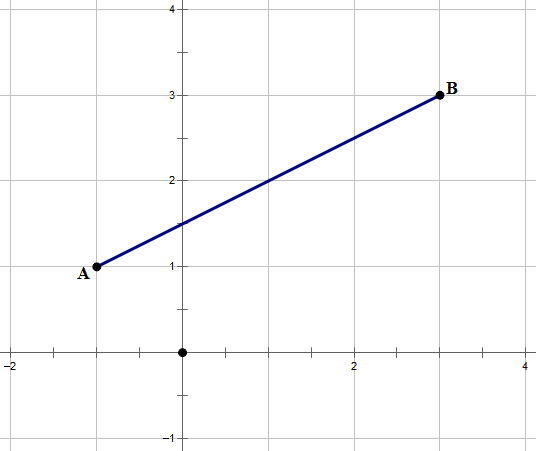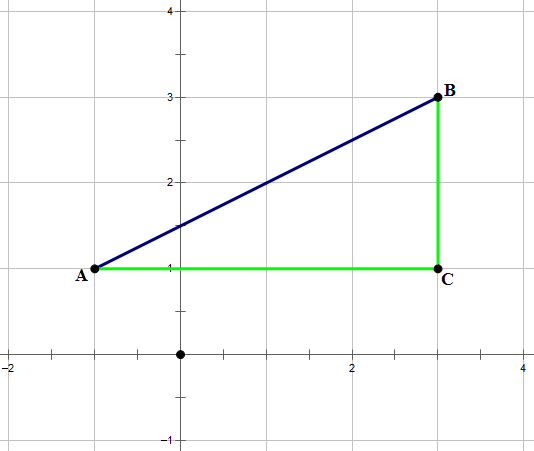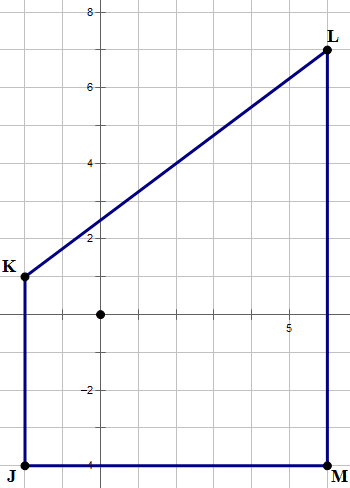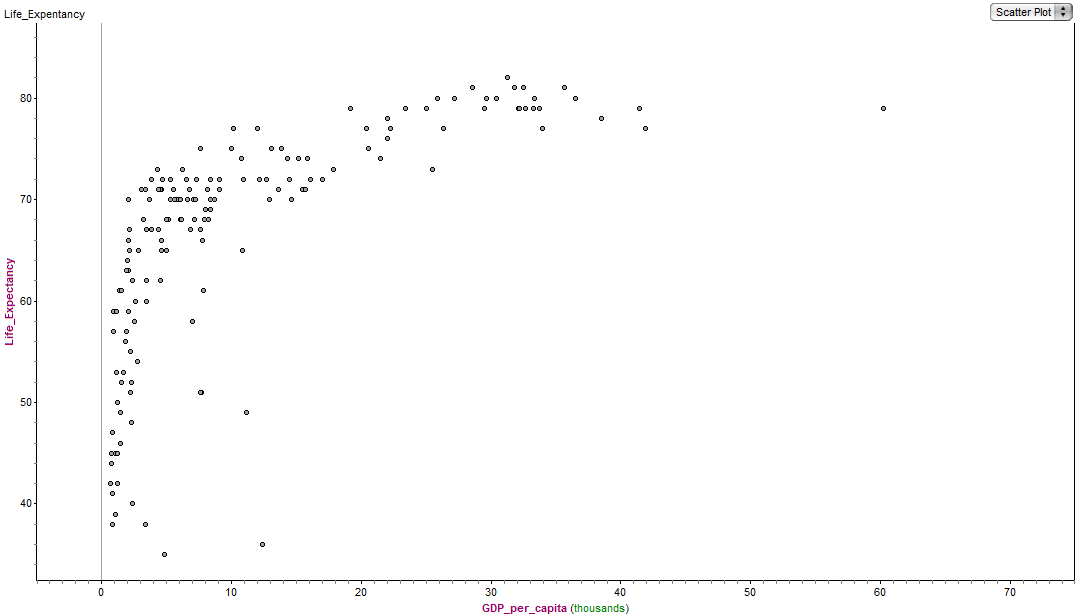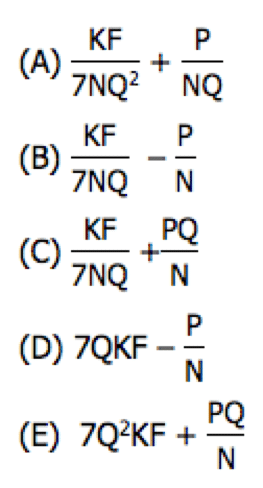How do you find the distance between two points in the x-y plane?
First, try these practice questions.
1) What is the distance from (–7, 2) to (5, –3)?
-
(A) 10
(B) 11
(C) 12
(D) 13
(E) 14
2) Consider the three points in the x-y plane: P = (8, 4), Q = (6, 7), and R = (9, 0). Rank these three points from closest to the origin, (0, 0), to furthest from the origin.
-
(A) P, Q, R
(B) P, R, Q
(C) Q, P, R
(D) R, P, Q
(E) R, Q, P
3) Trapezoid JKLM in the x-y plane has coordinates J = (–2, –4), K = (–2, 1), L = (6, 7), and M = (6, –4). What is its perimeter?
-
(A) 34
(B) 36
(C) 38
(D) 40
(E) 42
The x-y plane
The x-y plane is sometimes called the Cartesian plane, in honor of its creator, the multitalented philosopher and mathematician René Descartes (1596 – 1650). In the x-y plane, the x-coordinate of any point gives its horizontal position, how far right or left of the y-axis it is; the y-coordinate of any points gives its vertical position, how far above or below the x-axis it is. Notice that, on any horizontal line, all the y-coordinates would have to be the same, and on any vertical line, all the x-coordinates would have to be the same. Also notice: if any two points have the same x-coordinate, the segment that connects them must be vertical; and if any two points have the same y-coordinate, the segment that connects them must be horizontal. Those are very handy facts to know for the GMAT.
Finding distance in the x-y plane.
Big Idea #1: Horizontal & vertical distances are very easy to find!!
If two points have the same y-coordinate, then the segment connected them is horizontal. Simply subtract their x-coordinates to find the length of the segment between them.
If two points have the same x-coordinate, then the segment connected them is vertical. Simply subtract their y-coordinates to find the length of the segment between them.
BTW, whenever the GMAT gives you a geometric figure in the x-y plane and one or more of the sides are horizontal and/or vertical, the test is handing you a gift on a silver platter. Never fail to appreciate that.
Big Idea #2: For any oblique distance, use the Pythagorean Theorem
Perhaps in school you encountered something called the Distance Formula. If you already have that memorized and use it flawlessly, then good for you. If you don’t have it memorized, then I want you to blot out of your mind any trace of its existence. I don’t want you to memorize a needlessly complicated formula: instead, I want you to remember a simple procedure that accomplishes exactly the same thing.
The big idea is: use that most miraculously amazing theorem of mathematics, the Pythagorean Theorem. Combine this insight with Big Idea #1: we know horizontal & vertical distances are very easy to find, so construct a right triangle so that the distance you want to find is the hypotenuse, one leg is horizontal, and the other leg is vertical. Thus, you automatically get a triangle in which two of the sides are very simple to find, and the triangle is also automatically a right triangle, which guarantees that we can use the Pythagorean Theorem. For example, if we need to find the distance between A = (–1, 1) and B = (3, 3) —-
— then we simply draw a vertical segment going down from B, and a horizontal segment going to the right from A, and choose the third vertex, C, at the intersection:
Well, clearly AC = 4 and BC = 2, so then we are set up to find AB with the Pythagorean Theorem.
If you understand these two “big ideas”, then that’s all you need to know about distance in the x-y plane for the GMAT. If you had trouble with the practice questions, you may want to give them another look before reading the solutions below. Here’s another question from inside the Magoosh product:
4) http://gmat.magoosh.com/questions/820
Practice problem solutions
1) Suppose we made a right triangle, as in the example above. The difference in the x-coordinates is (–7) – 5 = –12, so the horizontal leg would have a length of 12 (length has to be positive). The difference in the y-coordinates is 2 – (–3) = 5, so this is the length of the vertical leg. We recognize that we have a common Pythagorean triplet, so we don’t even need to perform a calculation: we know the length of the hypotenuse, and hence, the distance between the two points, is 13. Answer = D
2) Of course, the easiest distance to find is that of point R: point R is a distance of 9 from the origin. To find the distance to P, we construct a triangle with a horizontal leg of 8 and a vertical leg of 4.
Similarly,
Therefore P is the closest to the origin, and Q is the furthest. The order is P, R, Q. Answer = B
3) This one may look challenging initially, but all kinds of simplifying tricks. First of all, J & K have the same x-coordinate, so that’s a vertical segment, and the length is JK = 1 – (–4) = 5. L & M also have the same x-coordinate, so that’s also a vertical segment, and the length is LM = 7 – (–4) = 11. J & M have the same y-coordinate, so that’s also a horizontal segment, and the length is JM = 6 – (–2) = 8. Right there, we have the lengths of three of the four sides.
The last side to find is KL. From K = (–2, 1), we have to go over 8 and up 6 to get to L = (6, 7), so 6 and 8 the legs of the right triangle, and KL is the hypotenuse. We recognize another common Pythagorean triplet — (6, 8, 10), which is a multiple of the (3, 4, 5) triplet. Thus, without further calculations, we immediately know KL = 10.
Perimeter = JK + KL + LM + JM = 5 + 10 + 11 + 8 = 34
Answer = A
For those who would like a visual, here’s the graph of this trapezoid.

